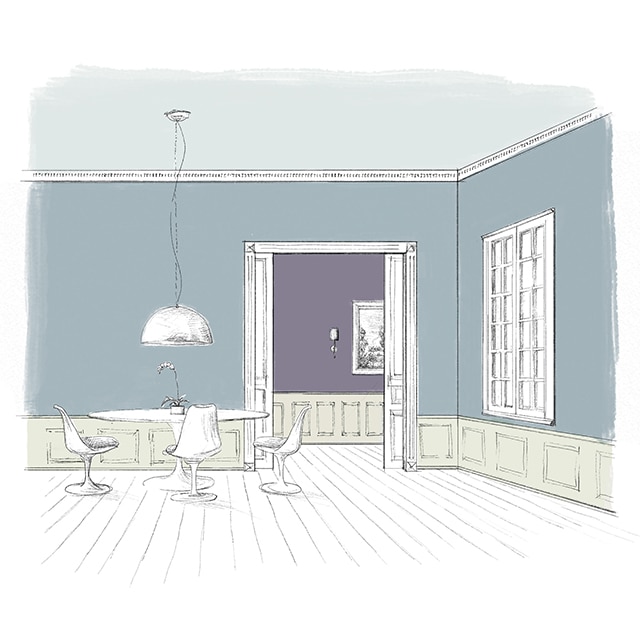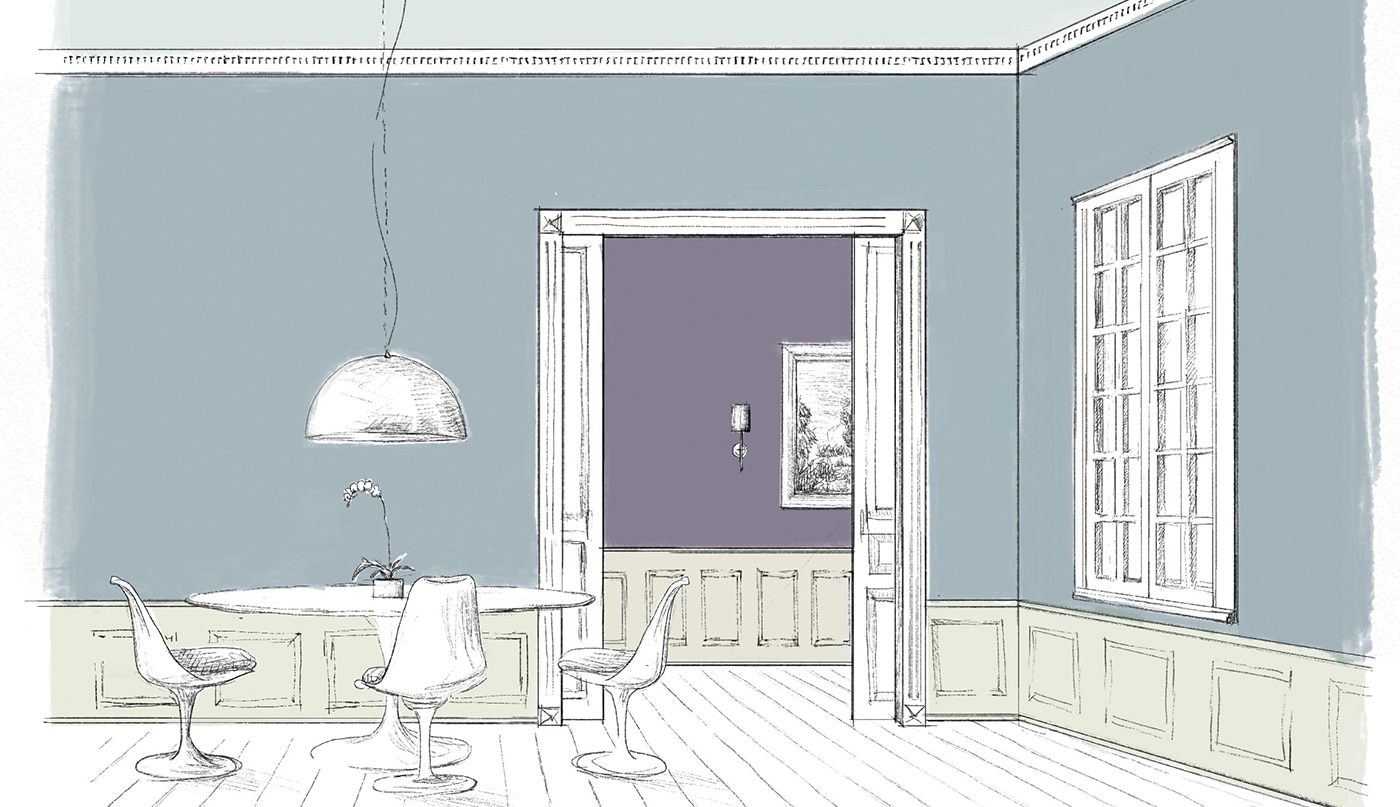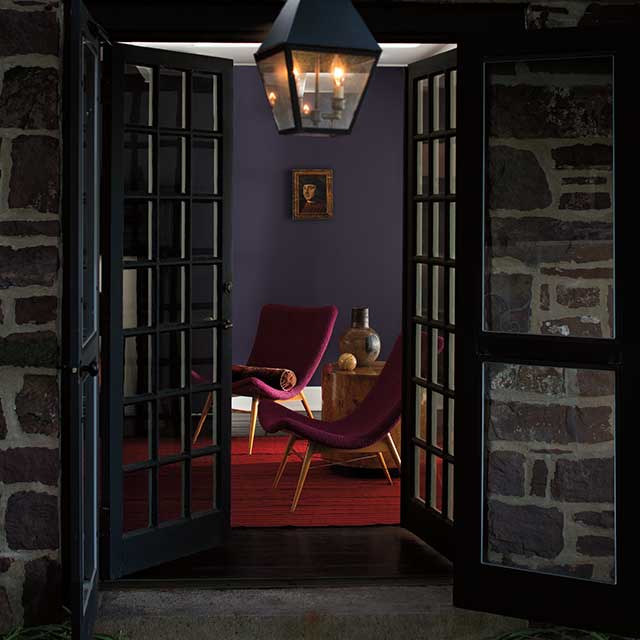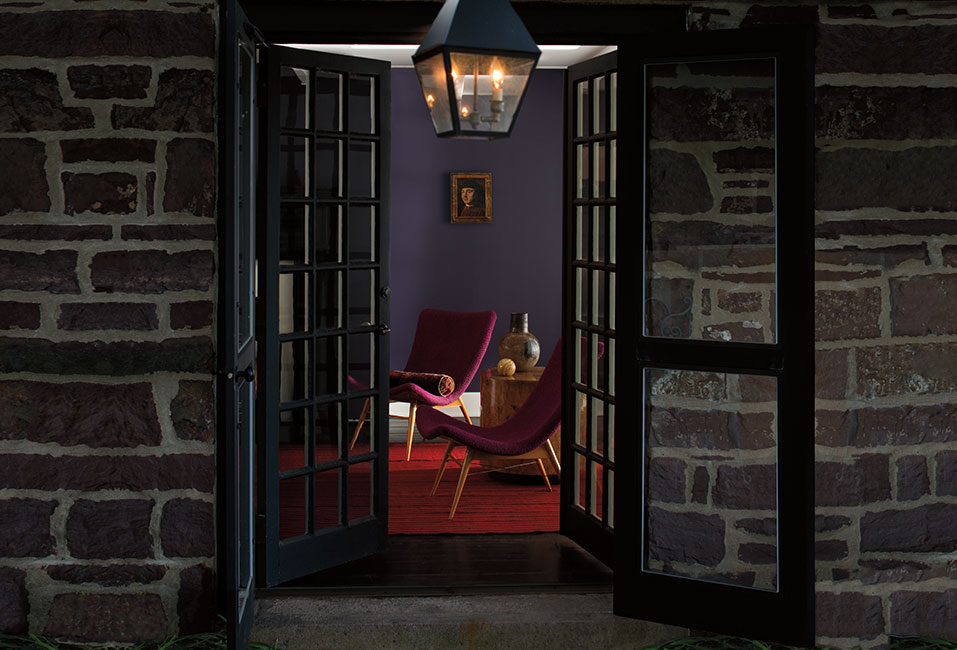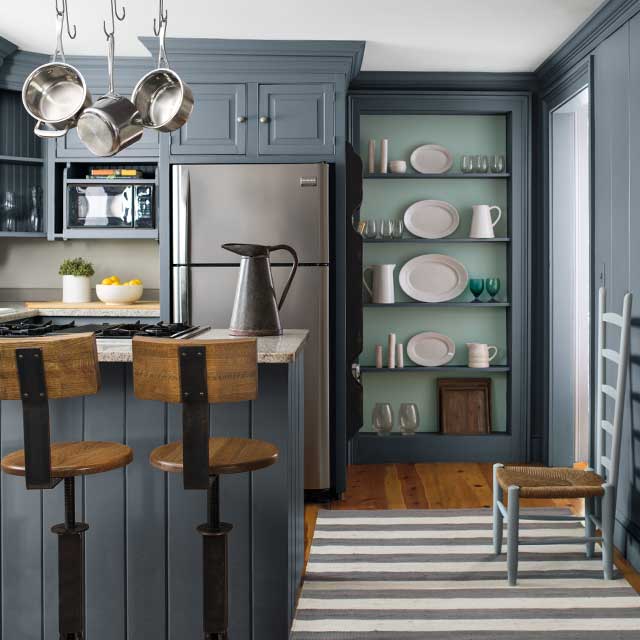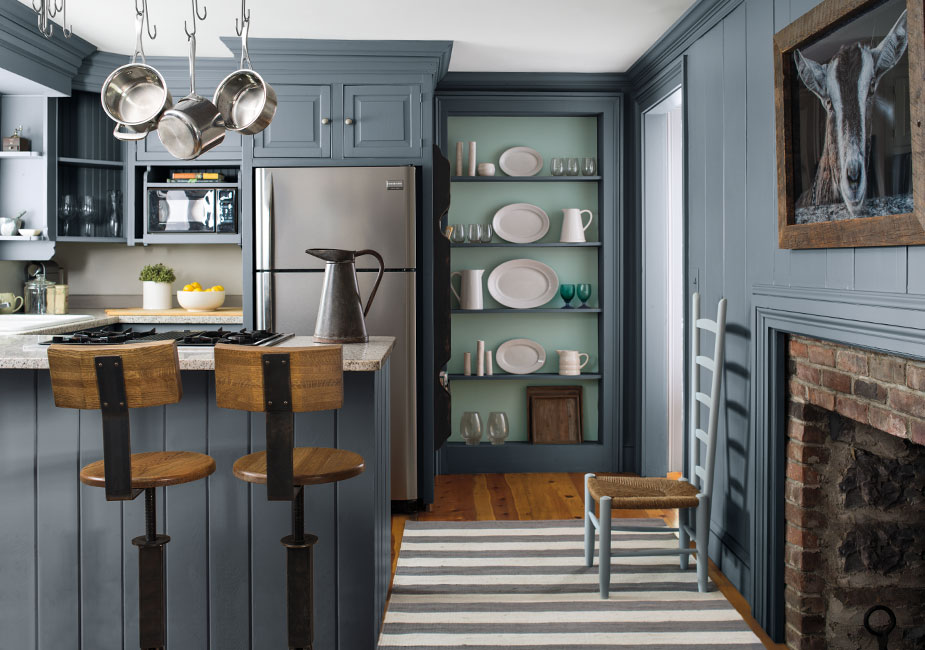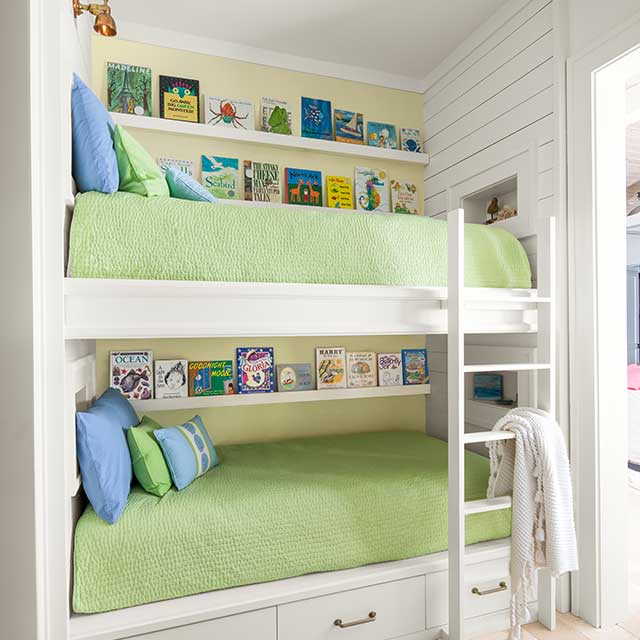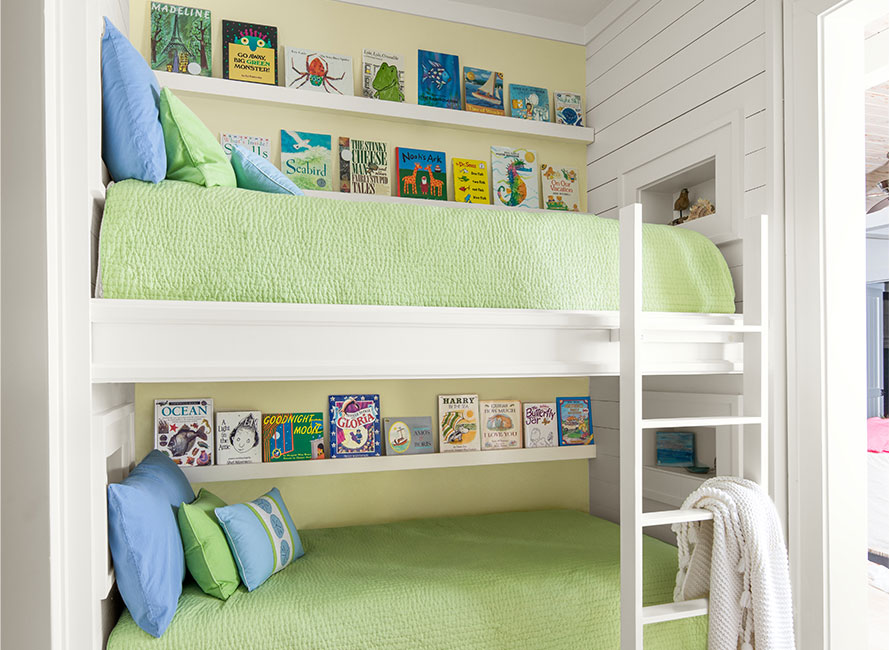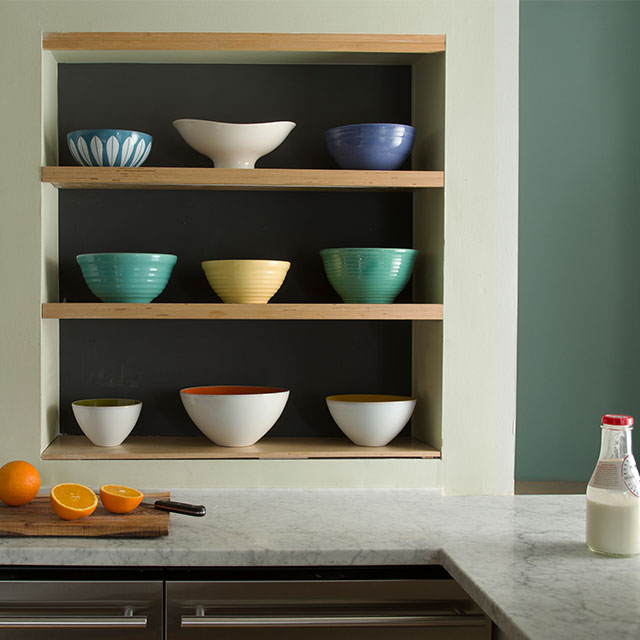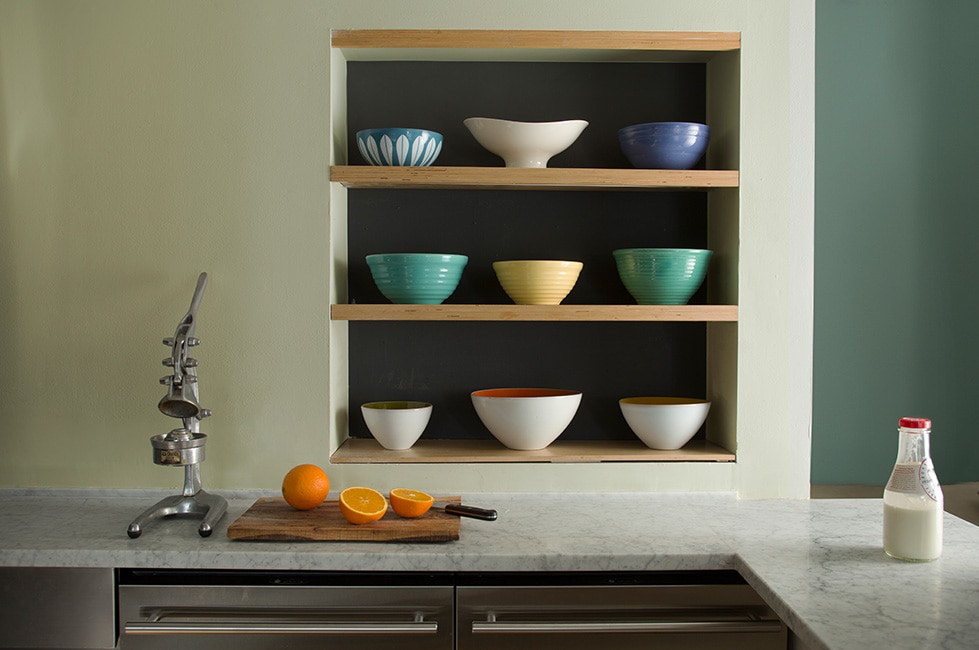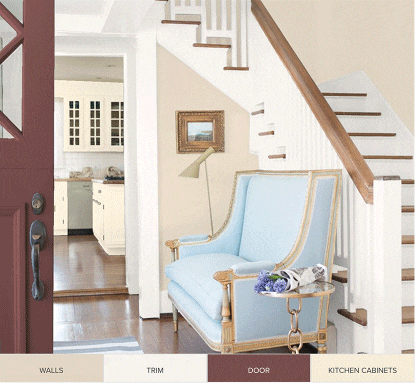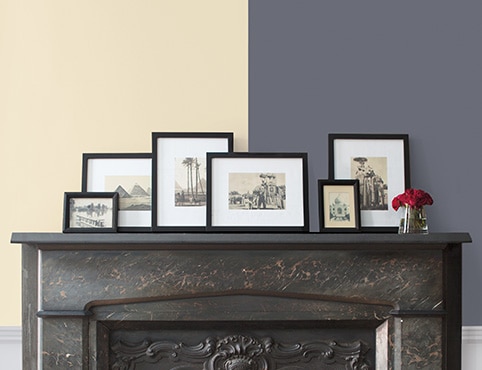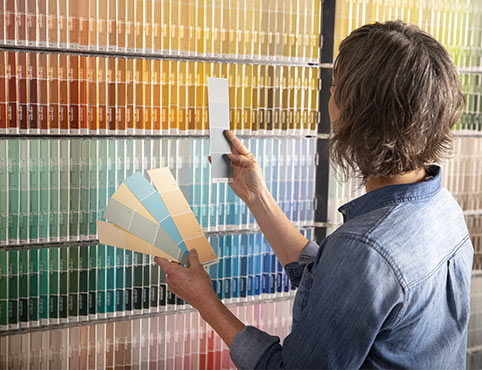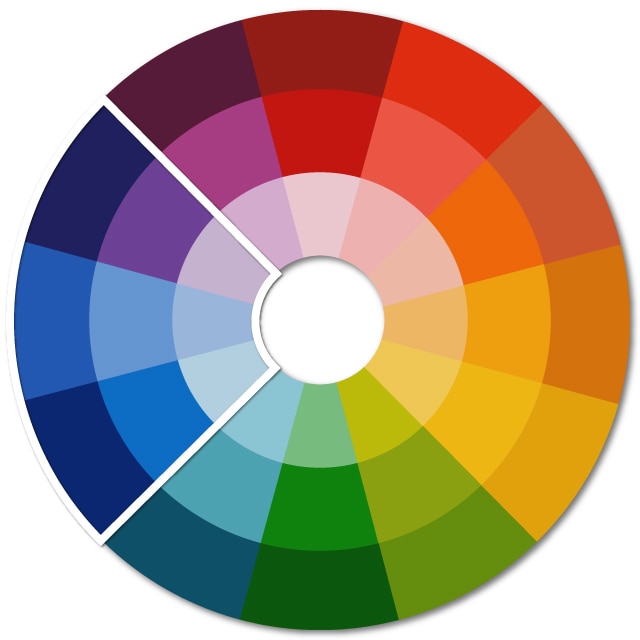
Analogous Colours 101
What is an analogous colour scheme? The simple answer is that analogous hues are three colour families that are adjacent to each other on the colour wheel.Taking a closer look, an analogous colour scheme combines a primary colour, a secondary colour and a tertiary colour:
- Primary colours: Red, blue and yellow—the primary source of all colours
- Secondary colours:
- red+blue=purple
- red+yellow=orange
- yellow+blue=green
- Tertiary colours: These are a mix of primary and secondary colours: red-orange, yellow-orange, yellow-green, blue-green, blue-violet, red-violet.
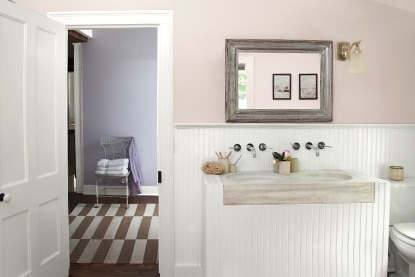
Analogous Colour Scheme and Colour Flow
An analogous colour scheme can be used to create an interconnected colour story in any room.Think how soft blues, greens and purples might evoke the feeling of a dusky, misty meadow. Or pale yellows, oranges and reds might conjure the sunrise of a new day.
Here, a pastel colour scheme creates harmonious colour flow from bathroom to hallway. “Antique Pearl 2113-70 is a soft, airy lilac that tends toward a neutral and has a hint of red-violet undertone,” explains Hannah Yeo, Manager of Colour Marketing and Development at Benjamin Moore. “This subtle red-violet undertone creates a seamless transition into the violet hallway, painted in Lavender Mist 2070-60.”
